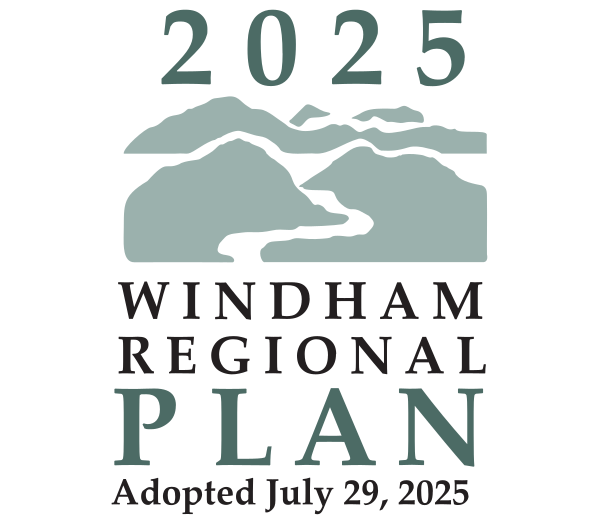Community Utilities, facilities, and services
wasteWater treatment Systems
Most of the region is served by on-site wastewater disposal systems and the majority of new housing is being built with private septic systems. There are 15 publicly and privately-owned wastewater treatment plants in the region. These systems are primarily located in village and town centers and in ski resort areas where there is a high concentration of commercial facilities and residential housing.
Villages that do not have centralized systems have difficulty attracting or retaining businesses and more concentrated residential development because these uses require a public system in a more densely settled area. Towns face high costs associated with the installation and maintenance of new systems, and there is often a lack of available land in village centers to site wastewater treatment facilities. Many of the existing wastewater facilities in the region also have trouble obtaining funding needed to maintain and upgrade their infrastructure. Funding can be obtained through user fees, capital reserve funds, bonding, and grants and loans.
Similar to public water systems, the State recognizes the need to help smaller towns with developing these systems and has set aside State and Local Fiscal Recovery Funds for grants for community wastewater systems in addition to existing funding programs. In the Windham Region, the towns of Londonderry, Grafton, and Jamaica are exploring systems for village centers in their communities. These towns are considering decentralized wastewater that includes small and larger soil-based water systems on suitable parcels. In comparison, centralized water treatment facilities have significantly higher costs and require more extensive permitting.
There are 9 municipalities with publicly owned wastewater treatment plants providing secondary or tertiary treatment and 4 privately owned treatment plants in the region (see Table 8-2). Facility types include lagoons, extended aeration and oxidation ditches, and rotating biological contactors. Most systems are operating under hydraulic capacity. However, the difference between design flow and current average flow does not necessarily represent available capacity. Other factors, such as capacity already allocated or being held in reserve, the ability to safely and economically dispose of the sludge that results from the treatment process, the organic load on the treatment plant that may be presented by different materials, and local decisions regarding how close to the limit the plant should operate, all affect the potential to use any remaining capacity. Generally, when a facility is operating at 80 percent capacity, the plant may be required to upgrade. Federal regulations and future nutrient loading limits may also play a prominent role in affecting the potential use of remaining capacity.
TABLE 8-2: windham region wastewater treatment facilities
| Municipality | Facility Design Capacity (MGD) | Percent of Design Hydraulic Capacity Remaining | Sludge Treatment or Disposal Technique | Effluent Disposal Location |
|---|---|---|---|---|
| Bellows Falls(serves Walpole & N. Walpole, NH) | 1.4 | 66% | Compost | Connecticut River |
| Brattleboro | 3 | 50% | Land Application | Connecticut River |
| Jacksonville | 0.0501 | 41% | Landfill/Compost | East Branch North River |
| Putney | 0.1 | 50% | Landfill/Incineration | Sacketts Brook |
| Readsboro | 0.075 | 42.9% | Land Application | Deerfield River |
| Saxtons River | 0.105 | 50% | Co-treatment | Saxtons River |
| West Dover | 0.475 | 40% | Landfill | Spray-Deerfield River Basin |
| Whitingham | 0.0123 | 43% | Landfill/Compost | Deerfield River |
| Wilmington Village | 0.135 | 73.75% | Landfill | Deerfield River |
| Wilmington/Cold Brook FD, Golf | 0.049 | 80% | Incineration | Spray-Deerfield River Basin |
| Wilmington/Cold Brook Fire District, Base | 0.03 | -- | Incineration | Spray-Deerfield River Basin |
| Winhall-Stratton Fire District | 0.83 | 30% | Treatment | Erving WWTF Erving, MA |
Source: Information provided by town offices and fire districts
Wastewater must be treated before being released to groundwater or surface water in order to ensure adequate removal of solids, destruction of pathogens, and removal of other pollutants, such as certain metals and organic compounds. Sludge disposal from municipal wastewater treatment plants is accomplished by land application, composting, landfilling, or incineration. No sludge is incinerated in the Windham Region, but several small treatment plants in the region ship sludge to be incinerated in Connecticut and landfilled in Massachusetts. The State of Vermont regulates the levels of nitrates, phosphates, PCBs, and seven metals in each land application of sludge.
Effluent that remains after treatment is discharged to either surface waters or groundwater. Four plants in the region discharge treated effluent by "spray irrigation," which involves spraying the effluent at controlled rates and at approved times of the year onto an area that is approved for that purpose and where public access is restricted. The remaining plants discharge effluent directly into one of the following streams: Connecticut River (four discharges), Deerfield River (three discharges), and one discharge each in Sacketts Brook, Saxtons River, East Branch North River, and No Name Brook. Discharges of effluent into surface waters are regulated by State and Federal agencies in accordance with regulatory requirements.
